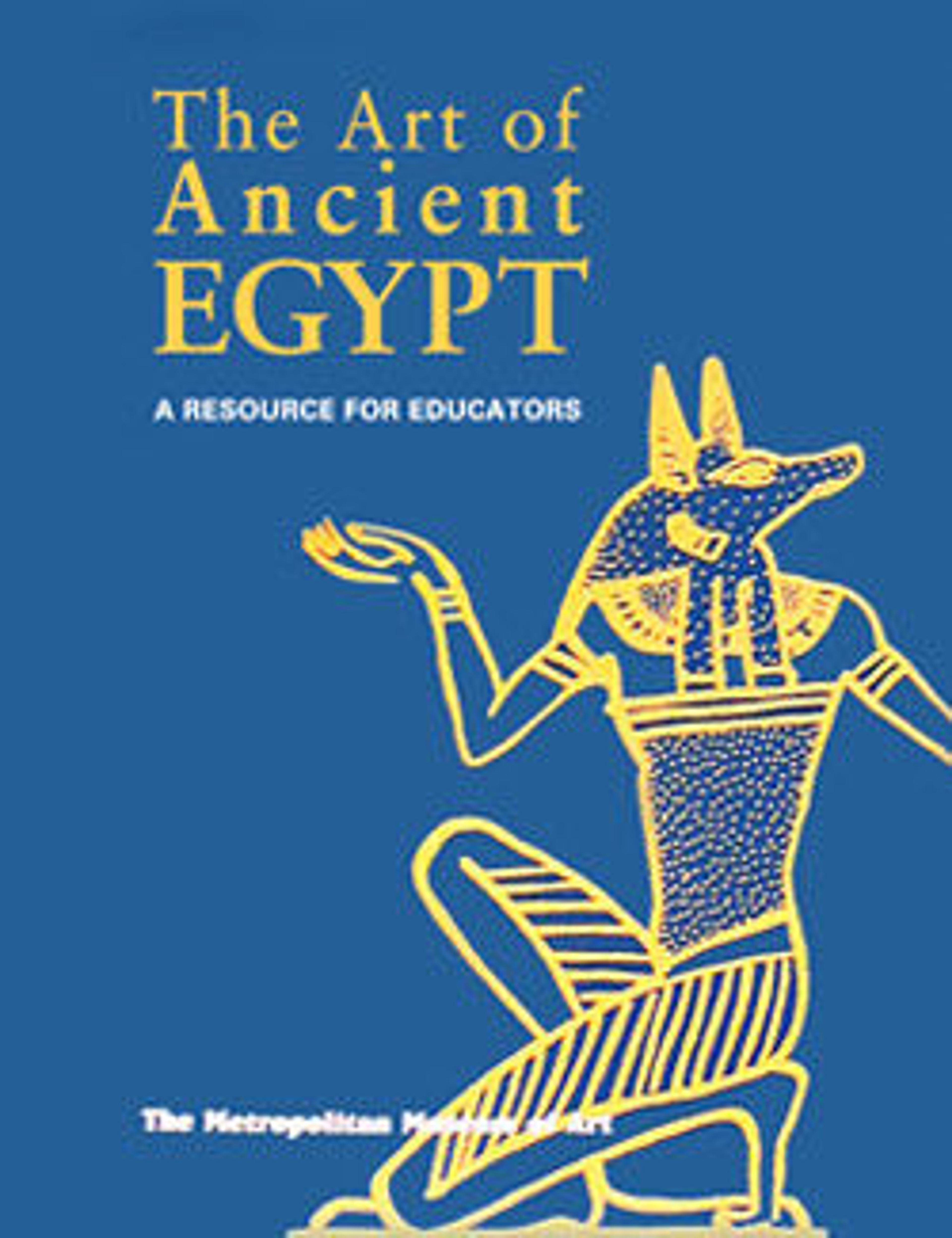Yuny and His Wife Renenutet
These figures represent Yuny seated next to his wife Renenutet. Yuny, who lived in the city of Asyut, was a chief royal scribe and holder of many other offices, perhaps including that of physician. Additional inscriptions on the base of the statue further elaborate Yuny's responsibilities. On the center fold of Yuny's pleated skirt is an inscription that reads: "May everything that comes forth upon the offering table of [the god] . . . and all pure food that comes forth from the Great Enclosure [the temple complex at Heliopolis] be for the chief scribe, royal scribe of letters, Yuny, justified."
Renenutet affectionately places her right arm around her husband's shoulders. On the back of the statue she is described as a singer of Amun-Re. In her left hand, she holds by its metal counterweight a heavy bead necklace called a menat. Menat necklaces were ritual implements that were held in the hands and shaken like cymbals, especially in the service of the goddess Hathor, but also when entering the presence of other deities..
Appropriate to their high secular and religious positions, Yuny and Renenutet wear the elaborate wigs and fine linen attire fashionable in their time. Renenutet is adorned with a lotus fillet and a necklace called a broad collar. The beads are in the shape of nefer hieroglyphs (meaning "good" or "beautiful"), offering vases, and floral petals. Traces of black remain on the wigs. The couple sit together on a bench with elegantly carved lion-paw feet.
On the back of the chair in both sunken and raised relief are two scenes illustrating the ancient Egyptian ideal of affection and remembrance among family generations. In the upper register, Yuny and Renenutet receive offerings from their son; in the lower, Renenutet offers food and drink to her parents.
Another statue depicting Yuny by himself is on display in gallery 130.
Renenutet affectionately places her right arm around her husband's shoulders. On the back of the statue she is described as a singer of Amun-Re. In her left hand, she holds by its metal counterweight a heavy bead necklace called a menat. Menat necklaces were ritual implements that were held in the hands and shaken like cymbals, especially in the service of the goddess Hathor, but also when entering the presence of other deities..
Appropriate to their high secular and religious positions, Yuny and Renenutet wear the elaborate wigs and fine linen attire fashionable in their time. Renenutet is adorned with a lotus fillet and a necklace called a broad collar. The beads are in the shape of nefer hieroglyphs (meaning "good" or "beautiful"), offering vases, and floral petals. Traces of black remain on the wigs. The couple sit together on a bench with elegantly carved lion-paw feet.
On the back of the chair in both sunken and raised relief are two scenes illustrating the ancient Egyptian ideal of affection and remembrance among family generations. In the upper register, Yuny and Renenutet receive offerings from their son; in the lower, Renenutet offers food and drink to her parents.
Another statue depicting Yuny by himself is on display in gallery 130.
Artwork Details
- Title:Yuny and His Wife Renenutet
- Period:New Kingdom, Ramesside
- Dynasty:Dynasty 19
- Reign:reign of Seti I
- Date:ca. 1294–1279 B.C.
- Geography:From Egypt, Middle Egypt, Asyut (Assiut, Siut; Lykopolis), Tomb of Amenhotep, Necropolis Cliff tomb, Medjdeni, Khashaba excavations, 1913
- Medium:Limestone, paint
- Dimensions:H. 84.5 × W. 54.5 × D. 73 cm (33 1/4 × 21 7/16 × 28 3/4 in.)
- Credit Line:Rogers Fund, 1915
- Object Number:15.2.1
- Curatorial Department: Egyptian Art
Audio
3465. Yuny and His Wife Renenutet
0:00
0:00
We're sorry, the transcript for this audio track is not available at this time. Please email info@metmuseum.org to request a transcript for this track.
More Artwork
Research Resources
The Met provides unparalleled resources for research and welcomes an international community of students and scholars. The Met's Open Access API is where creators and researchers can connect to the The Met collection. Open Access data and public domain images are available for unrestricted commercial and noncommercial use without permission or fee.
To request images under copyright and other restrictions, please use this Image Request form.
Feedback
We continue to research and examine historical and cultural context for objects in The Met collection. If you have comments or questions about this object record, please contact us using the form below. The Museum looks forward to receiving your comments.
